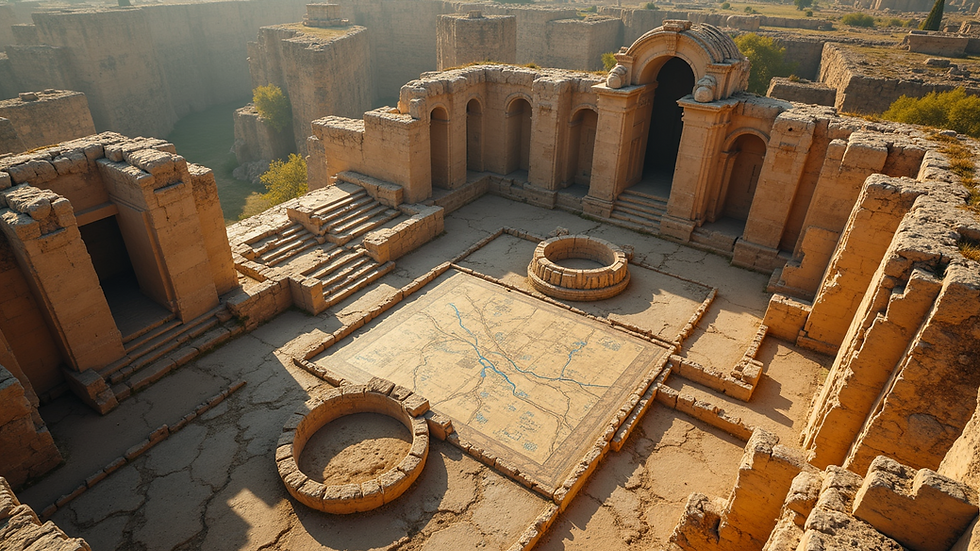How to Create Engaging Storylines for Your D&D Campaigns
- Matthew David
- Jun 9
- 4 min read
Dungeons & Dragons (D&D) is more than just a game; it’s an immersive storytelling experience that allows players to engage in collaborative world-building. Crafting an engaging storyline is vital for keeping players invested in the campaign. In this guide, we’ll explore how to create captivating D&D storylines that will evoke excitement, emotions, and memorable experiences for your players.
D&D Storylines: The Heart of Your Campaign
The storyline is the backbone of any D&D campaign. A strong narrative invites players to connect with their characters and the world around them. To create a compelling storyline, consider the following key elements:
Understand Your Players’ Interests: Begin by knowing what excites your players. Are they in it for exploration, combat, role-playing, or a mix of all three? Tailoring your story to their preferences enhances engagement.
World-Building: Craft a vivid, immersive world. Think about the different regions, cultures, and histories. A well-developed setting provides plenty of material for quests and character backgrounds.
Conflict and Stakes: Every great story has conflict. Identify what the central conflict will be. Whether it’s a looming war, a terrible monster threatening a village, or political intrigue, make sure the stakes are high to keep players invested.
Character Development: Include opportunities for players to grow and change their characters. Personal quests tied to their backstories can lead to strong emotional ties to the overall narrative.

Crafting Compelling Characters
Your players aren’t the only ones who need to experience character development; the non-player characters (NPCs) in your campaign should also be memorable and engaging. Here’s how to create compelling NPCs:
Backstories: Just like player characters, NPCs deserve rich backgrounds. This can provide context and motivations for their actions. For example, a weary tavern keeper might have lost their family to bandits, creating a sympathetic ally for the players.
Unique Traits: Give each NPC quirks, beliefs, or goals that make them stand out. A blacksmith who speaks only in riddles or a noble who is obsessed with art can add flavor to your campaign.
Dynamic Relationships: Characters should not exist in a vacuum. Develop relationships between NPCs and between NPCs and players. Friends, enemies, and rivals can add layers and complexity to interactions.

Weaving Subplots and Side Quests
Subplots enrich the main storyline and break up the flow to keep sessions dynamic. Here’s how to effectively weave subplots and side quests into your campaign:
Personal Quests: Tie in player character backstories with the main quest. If a player's character is seeking vengeance against a rogue wizard who wronged them, this subplot can seamlessly integrate into the main narrative.
Community Events: Create engaging side quests involving local festivals, political turmoil, or natural disasters that demand the players’ attention. These can lead to unique interactions with NPCs and develop the world further.
Mysterious Rumors: Plant rumors that players can choose to investigate. This builds excitement and anticipation. Encourage players to follow their curiosity, unveiling deeper layers of your main story.
The Power of Climax and Resolution
A satisfactory climax and resolution are crucial for ensuring players feel accomplished and invested in the storyline. Here’s how to construct these elements effectively:
Build Tension: Lead up to a climactic moment through escalating challenges. Each encounter should feel like it’s building toward something significant, keeping players eager to see what happens next.
A Meaningful Showdown: The final confrontation should be a memorable battle that feels significant in the context of the entire campaign. Consider the setting, stakes, and emotional weights tied to it.
Satisfying Resolutions: After the climactic showdown, provide a satisfying conclusion that ties up loose ends. Allow characters to reflect on their journey and establish what happens next for them individually and as a group.

Encouraging Player Agency
One of the most engaging aspects of D&D is player choices impacting the storyline. Let’s explore how to ensure players feel a sense of agency:
Multiple Paths to Victory: Allow players to tackle challenges in various ways. Whether they choose negotiation, stealth, or combat, give them the freedom to decide how to approach situations.
Branching Outcomes: Create scenarios where player choices lead to different outcomes. This not only keeps players engaged but also increases replayability, making them eager to see how different decisions play out.
Incorporate Feedback: After sessions, take time to ask players what they enjoyed or what they want to explore more. Using feedback to mold your ongoing storyline fosters a collaborative atmosphere.
Final Thoughts
Creating engaging storylines for your D&D campaigns is a rewarding but complex task. By understanding your players' interests, crafting compelling characters, and weaving intricate plots together, you can develop a captivating narrative that resonates.
Remember to incorporate player agency and encourage feedback to adapt the story dynamically. This approach leads to more enriched experiences, especially in online D&D campaigns, where you have the flexibility to explore boundless creativity.
Engage your players with well-thought-out plots, colorful characters, and immersive worlds. The magic of storytelling lies in collaboration, so enjoy the journey as you create epic tales together!



Great piece! One thing I've learned over the years is that there isn't really a "right" or "wrong" way to create a story, but there is a difference between a "good" and "bad" story. Still learning the difference on what exactly makes good versus bad, but it's fun experimenting with different methods of creating it. Two of my most memorable story arcs in my campaign were written around feeling specific emotions. The first one was a constant state of stress, emotional exhaustion, and attritional fatigue. This was inspired by the games Pathologic and Pathologic 2 (which I can't recommend enough for anyone interested in storytelling) The other was focused around emotional conflict, where the party had interests in two sides of a conflict and ultimately…